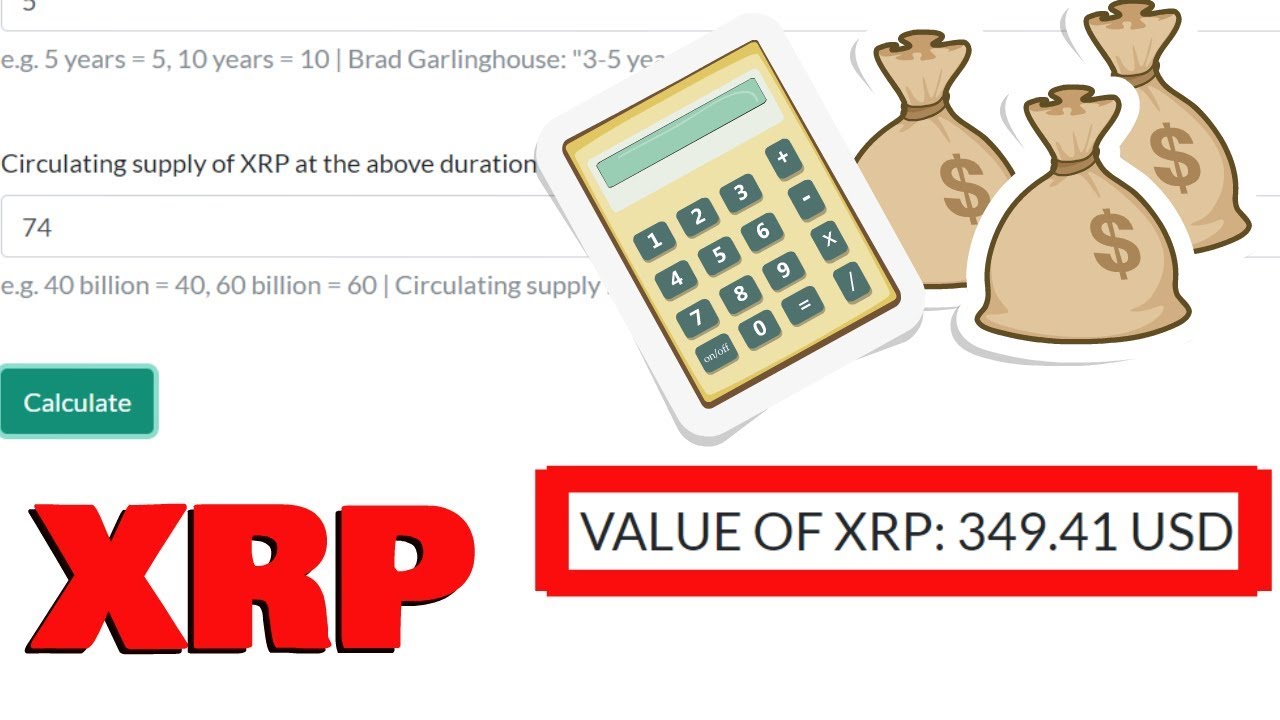Introduction
Welcome to the world of cryptocurrencies, where the rise of digital currencies has captivated the attention of investors and tech enthusiasts worldwide. Over the past decade, cryptocurrencies have taken the financial industry by storm, disrupting traditional payment systems and revolutionizing the way we think about money. But what exactly determines the value of these digital assets?
Cryptocurrencies, such as Bitcoin, Ethereum, Ripple, and Litecoin, are decentralized digital currencies that utilize cryptography for secure transactions. Unlike traditional fiat currencies, such as the US Dollar or Euro, cryptocurrencies are not controlled by any central authority or government. Instead, they operate on a peer-to-peer network called the blockchain.
So, what drives the value of cryptocurrencies? There are several factors at play that can influence their worth, including market demand and supply, investor sentiment, government regulations, and the inherent volatility of these assets.
In this article, we will delve into the intricacies of cryptocurrency valuation. We will explore the most prominent cryptocurrencies in the market, discuss the factors that impact their value, and provide insights on how to keep track of their current prices.
Whether you are a seasoned investor looking to expand your portfolio, a tech enthusiast fascinated by blockchain technology, or simply curious about the world of digital currencies, this guide will give you a comprehensive understanding of how cryptocurrency values are determined.
So, buckle up and get ready to explore the exciting and ever-changing world of cryptocurrency valuation!
Factors Affecting the Value of Cryptocurrency
While the value of cryptocurrencies is influenced by multiple factors, here are some key elements that play a significant role in determining their worth:
- Market Demand and Supply: One of the primary drivers of cryptocurrency value is the demand and supply dynamics in the market. When the demand for a particular cryptocurrency surpasses its supply, the price tends to rise. Conversely, if the supply outpaces the demand, the price may decline. Factors such as user adoption, media coverage, and market perception can affect the demand, thereby impacting the value of a cryptocurrency.
- Investor Sentiment: Cryptocurrency markets are highly influenced by investor sentiment. Positive news, partnerships, and technological advancements can fuel optimism among investors, leading to increased demand and higher prices. On the other hand, negative events such as security breaches, regulatory crackdowns, or market uncertainties can trigger fear and sell-offs, causing prices to drop.
- Government Regulations: The regulatory landscape surrounding cryptocurrencies can significantly impact their value. Government actions, such as implementing favorable regulations to promote adoption or introducing restrictive policies, can sway investor sentiment and influence market dynamics. Cryptocurrencies operating within a supportive regulatory framework may experience increased demand, while those facing regulatory challenges may face decreased value.
- Volatility: Cryptocurrencies are known for their volatility, with prices often experiencing significant fluctuations in short periods. The high volatility can be attributed to factors such as market speculation, limited liquidity, and the absence of traditional financial mechanisms. While volatility can provide lucrative trading opportunities, it also introduces risks and uncertainties for investors.
It is important to note that these factors interact with each other and can have a compounding effect on cryptocurrency value. For example, positive regulatory developments can boost investor sentiment and increase market demand, leading to higher prices. Conversely, negative regulatory actions can generate fear and uncertainty, causing prices to decline.
As the cryptocurrency market continues to evolve, new factors may emerge that can influence the value of digital assets. Staying informed and keeping a pulse on the latest developments is crucial for understanding and assessing cryptocurrency valuation.
In the next sections, we will explore specific cryptocurrencies, such as Bitcoin, Ethereum, Ripple, and Litecoin, and examine the factors that make them unique and drive their individual values.
Bitcoin: The King of Cryptocurrencies
When it comes to cryptocurrencies, Bitcoin reigns supreme. Created in 2009 by an anonymous person or group of people known as Satoshi Nakamoto, Bitcoin introduced the world to the concept of decentralized digital currency and blockchain technology.
What sets Bitcoin apart from other cryptocurrencies is its pioneering status and market dominance. Bitcoin was the first cryptocurrency to gain significant traction and achieve widespread recognition. As a result, it has become the benchmark for the entire cryptocurrency market, often referred to as “digital gold.”
Bitcoin’s value is influenced by various factors, including:
- Market Perception: Bitcoin’s reputation as the original and most well-established cryptocurrency adds to its market appeal. Many investors see Bitcoin as a long-term store of value and a hedge against traditional financial systems. The perception of Bitcoin as a safe haven asset can influence its demand and drive its value.
- Limited Supply: Bitcoin has a finite supply, with a maximum number of 21 million coins. This scarcity factor gives Bitcoin a unique value proposition, as it cannot be inflated or manipulated by central authorities. This limited supply combined with increasing demand over time has contributed to its price appreciation.
- Market Liquidity: Bitcoin boasts high market liquidity, meaning it can be easily bought or sold without significantly impacting its price. This liquidity allows investors to enter or exit positions with relative ease, making Bitcoin an attractive asset for traders and facilitating price discovery.
- Halving Events: Every four years, the Bitcoin network undergoes a halving event, reducing the block rewards for miners by half. This event serves to decrease the rate of new Bitcoin supply, creating scarcity and potentially driving up its value. The most recent halving in May 2020 has fueled anticipation for the long-term appreciation of Bitcoin.
Bitcoin’s price history has been characterized by extreme volatility, with dramatic price surges and corrections. While this can be a deterrent for some investors, it also presents opportunities for potentially significant returns.
As the cryptocurrency market continues to evolve, Bitcoin remains at the forefront, setting the standard for other digital assets. However, it’s important to recognize that Bitcoin’s dominance is not without competition. Other cryptocurrencies, such as Ethereum, Ripple, and Litecoin, are gaining traction and offering unique features and use cases.
In the following sections, we will explore these cryptocurrencies in more detail and discuss the factors that contribute to their respective values.
Ethereum: The Most Promising Altcoin
While Bitcoin paved the way for cryptocurrencies, Ethereum has emerged as a strong contender and a versatile blockchain platform. Launched in 2015 by Vitalik Buterin, Ethereum introduced smart contracts, programmable applications that run on its blockchain, revolutionizing the capabilities of decentralized applications (dApps).
What makes Ethereum stand out from other cryptocurrencies is its ability to support the development of decentralized applications beyond digital currency transactions. This flexibility has positioned Ethereum as the most promising altcoin, offering a wide range of use cases and attracting significant attention from developers, enterprises, and investors.
Ethereum’s value is influenced by several factors, including:
- Adoption and Network Effects: Ethereum’s widespread adoption is a key driver of its value. As more developers build dApps and decentralized services on the Ethereum blockchain, the network effect grows stronger. Increased usage and demand for Ethereum’s platform and native cryptocurrency, Ether (ETH), contribute to its value appreciation.
- Decentralized Finance (DeFi): Ethereum has become the foundation for the explosive growth of decentralized finance applications. DeFi offers a myriad of financial services, including lending, borrowing, staking, and decentralized exchanges, all powered by smart contracts on the Ethereum blockchain. The rise of DeFi has significantly boosted Ethereum’s demand and propelled its value.
- Upgrade and Improvement Initiatives: Ethereum is in a constant state of development and improvement. The upcoming Ethereum 2.0 upgrade aims to enhance scalability, security, and sustainability by transitioning from a proof-of-work to a proof-of-stake consensus mechanism. These improvements are anticipated to address Ethereum’s scalability issues and further solidify its position as a leading blockchain platform.
- Developer Community: Ethereum boasts a vibrant and active developer community, constantly pushing the boundaries of blockchain technology. This community contributes to the development of innovative dApps, tools, and infrastructure, which ultimately adds value to the Ethereum ecosystem.
While Ethereum faces scalability challenges and increased competition from other blockchain platforms, its strong network effects, extensive developer community, and adoption in the DeFi space make it a promising altcoin with substantial growth potential.
As the Ethereum network evolves and the transition to Ethereum 2.0 unfolds, it will be fascinating to witness how these developments impact the value and utility of Ether and solidify Ethereum’s position in the digital asset landscape.
In the next section, we will explore Ripple, a cryptocurrency that aims to revolutionize the realm of digital payments.
Ripple: The Future of Digital Payments
Ripple is not just a cryptocurrency but also a real-time gross settlement system, currency exchange, and remittance network. Designed to facilitate fast and low-cost international money transfers, Ripple aims to revolutionize the way financial institutions and individuals transact across borders.
Ripple’s native cryptocurrency, XRP, plays a crucial role in the Ripple network. Unlike Bitcoin or Ethereum, Ripple is not based on blockchain technology but uses a consensus algorithm called the Ripple Protocol Consensus Algorithm (RPCA). This algorithm ensures secure transactions, quick settlement times, and low transaction fees.
The value of Ripple and XRP is driven by several factors:
- Partnerships with Financial Institutions: Ripple has forged partnerships with numerous banks and financial institutions worldwide. This strategic collaboration increases the adoption of Ripple’s technology and XRP as a digital asset. As more institutions integrate Ripple’s solutions into their operations, the demand for XRP may increase, potentially driving its value.
- Efficient Cross-Border Transactions: Ripple’s primary focus is facilitating cross-border transactions, which traditionally suffer from high costs and slow settlement times. By offering a fast and cost-effective alternative, Ripple aims to disrupt traditional payment systems. The ability to send large amounts of money across borders quickly and inexpensively is a significant value proposition that can attract users and contribute to XRP’s value.
- Liquidity for Remittance Markets: Ripple targets the remittance market, where individuals living abroad frequently send money back home. By offering liquidity solutions, Ripple enables faster and more secure remittances, making it an attractive option for migrants and their families. The demand for XRP in remittance corridors can positively impact its value.
- Utility and Use Cases: Ripple and XRP have potential use cases beyond cross-border transactions. For instance, some financial institutions utilize XRP as a bridge asset for liquidity. Furthermore, Ripple’s technology, including its Interledger Protocol (ILP), can facilitate the exchange of various assets, not limited to cryptocurrencies. The utility and versatility offered by Ripple’s solutions may contribute to the value of XRP.
It’s important to note that while Ripple has seen success in forging partnerships and gaining traction in the financial industry, it has also faced regulatory challenges. The classification of XRP as a security by regulatory authorities can impact its value and hinder its growth in certain jurisdictions.
As Ripple continues to navigate the landscape of digital payments and expand its network of partnerships, its success in disrupting traditional payment systems and fulfilling its vision will play a vital role in determining the future value of XRP.
Now, let’s explore Litecoin, often referred to as the silver to Bitcoin’s gold, in the next section.
Litecoin: The Silver to Bitcoin’s Gold
Litecoin, often dubbed the “silver” to Bitcoin’s “gold,” is a peer-to-peer cryptocurrency that shares several similarities with its predecessor. Created by Charlie Lee in 2011, Litecoin was designed to offer faster transaction confirmation times and a different hashing algorithm, making it a potential alternative to Bitcoin.
While Litecoin draws inspiration from Bitcoin, it has developed its own identity and features that contribute to its value:
- Faster Transaction Times: Litecoin is known for its faster block generation time compared to Bitcoin. As opposed to Bitcoin’s 10-minute block time, Litecoin’s blocks are generated approximately every 2.5 minutes. This enables faster transaction confirmations, making Litecoin more suitable for everyday transactions.
- Scrypt Algorithm: Litecoin distinguishes itself by using the Scrypt proof-of-work algorithm, which differs from Bitcoin’s SHA-256 algorithm. This choice enhances Litecoin’s resistance to ASIC mining, making it more accessible to individual miners and promoting decentralization.
- Lower Transaction Fees: Due to its faster block time and larger block size limit, Litecoin can handle a higher transaction volume with lower fees compared to Bitcoin. This cost-effectiveness makes Litecoin an attractive option for smaller transactions, contributing to its value proposition.
- Active Development and Community: Litecoin benefits from an active development team and community. Continuous updates and improvements ensure the longevity and relevance of the project. Litecoin has also seen significant merchant adoption, with various businesses accepting it as a form of payment, further bolstering its value.
Litecoin’s relationship with Bitcoin is often likened to that of silver and gold. While Bitcoin remains the dominant cryptocurrency and a store of value, Litecoin aims to complement Bitcoin by offering faster, cheaper transactions for everyday use.
As the cryptocurrency market evolves, Litecoin’s success as a viable alternative to Bitcoin and its ability to carve out its niche will ultimately determine its long-term value.
Now that we have explored some of the major cryptocurrencies, let’s move on to discussing other notable digital assets and their respective value factors.
Other Major Cryptocurrencies to Watch Out For
While Bitcoin, Ethereum, Ripple, and Litecoin are widely recognized as the frontrunners in the cryptocurrency market, several other digital currencies have emerged and gained prominence in recent years. These cryptocurrencies offer unique features, use cases, and value propositions worth considering:
- Cardano (ADA): Cardano is a blockchain platform that aims to provide a secure and scalable infrastructure for the development of decentralized applications and smart contracts. Notably, Cardano incorporates a peer-reviewed research-driven approach, enhancing its credibility and potential.
- Polkadot (DOT): Developed by Ethereum co-founder Gavin Wood, Polkadot is a multi-chain platform that enables interoperability between different blockchains. It facilitates the transfer of assets and data across different networks, offering scalability and flexibility in the evolving blockchain ecosystem.
- Chainlink (LINK): Chainlink focuses on connecting smart contracts with real-world data and external APIs. It acts as a decentralized oracle network, enabling smart contracts to access information from external sources reliably. Chainlink’s technology aims to enhance the capabilities and application potential of smart contracts.
- Stellar (XLM): Stellar is a blockchain platform designed to facilitate fast, low-cost international money transfers and cross-border transactions. It aims to bridge the gap between traditional financial systems and digital currencies, offering a seamless and efficient platform for global transactions.
- Tezos (XTZ): Tezos is a self-amending blockchain platform that allows for on-chain governance and upgrades without requiring a hard fork. This flexibility and adaptability make Tezos a versatile platform for building smart contracts, enabling developers to evolve the network over time.
These are just a few examples of the myriad of cryptocurrencies making waves in the market. Each cryptocurrency has its own unique value proposition, target audience, and potential for growth. It is essential to conduct thorough research and consider various factors before investing in any cryptocurrency.
As the cryptocurrency industry continues to evolve, new projects and innovations will emerge. Keeping an eye on emerging cryptocurrencies and understanding their technology, applications, and market trends can provide valuable insights into future investment opportunities.
Now that we have explored some of the major cryptocurrencies and their value factors, let’s delve into the broader dynamics that impact cryptocurrency prices.
The Role of Market Demand and Supply
Market demand and supply dynamics play a fundamental role in determining the value of cryptocurrencies. The interplay between buyers and sellers in the market can significantly influence the prices of digital assets. Understanding how market demand and supply impact cryptocurrency valuations is essential for investors and traders.
Market demand refers to the desire of investors and users to acquire a particular cryptocurrency. Demand can be influenced by various factors such as:
- User Adoption: The number of individuals and businesses using a specific cryptocurrency can affect its demand. Higher adoption rates indicate increased utility and potential value, attracting more investors.
- Media Coverage: Positive media coverage can generate interest and spur demand for cryptocurrencies. News of partnerships, developments, or endorsements can influence market sentiment and drive up demand.
- Investor Sentiment: Investor sentiment, often driven by market trends and speculation, can have a significant impact on demand. Optimistic sentiment can fuel buying pressure and increase the value of a cryptocurrency, while negative sentiment can lead to sell-offs and price declines.
- Use Case and Utility: The practical applications and use cases of a cryptocurrency can determine its demand. Cryptocurrencies that offer unique solutions, address real-world problems, or facilitate specific transactions may attract users and investors, driving up demand.
On the other hand, market supply refers to the number of coins or tokens available for trading. Factors affecting the supply of cryptocurrencies include:
- Issuance and Distribution: The initial release and subsequent issuance of a cryptocurrency can impact its supply. Coins or tokens distributed evenly or rewarded for mining over time can create a controlled and predictable supply.
- Token Economics: The specific token economics of a cryptocurrency, such as inflation rates, halving events, or burn mechanisms, can influence its supply. For example, when the supply of newly minted tokens decreases due to a halving event, it can contribute to supply scarcity and potentially increase the value.
- Locked or Burnt Tokens: Some cryptocurrencies have mechanisms that lock or burn a portion of the tokens, reducing their supply over time. This scarcity can impact the value of the remaining tokens in circulation.
- Mining Difficulty: Cryptocurrencies that utilize proof-of-work consensus mechanisms may have mining difficulty adjustments. These adjustments ensure a consistent and controlled rate of new coin creation, preventing excessive supply growth.
Market demand and supply interact with each other, forming a delicate balance that determines the price of a cryptocurrency. When demand exceeds supply, prices tend to rise. Conversely, when supply outstrips demand, prices may decline.
It’s important to note that cryptocurrency markets are highly volatile and influenced by various external factors. Rapid shifts in market sentiment, regulatory changes, and global economic events can impact both demand and supply dynamics, causing significant price fluctuations.
Keeping a close eye on market demand and supply dynamics, monitoring investor sentiment, and staying informed about the factors driving the value of specific cryptocurrencies are essential for making sound investment decisions in the ever-evolving world of cryptocurrencies.
In the next section, we will explore the role of investors and institutions in cryptocurrency valuations.
The Role of Investors and Institutions
Investors and institutions play a crucial role in the valuation and stability of the cryptocurrency market. Their actions, sentiments, and involvement can have a significant impact on the prices of digital assets. Understanding the dynamics of investor behavior and institutional participation is essential for comprehending cryptocurrency valuations.
Individual Investors:
Individual investors, both retail and institutional, are key participants in the cryptocurrency market. Their actions can dictate market trends and contribute to price movements. Factors influencing individual investor behavior include:
- Risk Appetite: Individual investors’ risk tolerance and appetite for volatility can influence their decision to invest in cryptocurrencies. Speculative traders may actively seek out opportunities for short-term gains, contributing to price fluctuations.
- Market Sentiment: Investor sentiment, influenced by news, media coverage, or social media discussions, can impact the demand and value of cryptocurrencies. Positive sentiment can attract more buyers, driving prices up, while negative sentiment can lead to sell-offs and price declines.
- Long-Term Belief and Adoption: Some individual investors have a long-term belief in the potential of cryptocurrencies, seeing them as investments for the future. Those who view cryptocurrencies as a store of value or a hedge against traditional financial systems contribute to the stability and growth of the market.
- Trading and Speculation: Many investors engage in cryptocurrency trading and speculation to take advantage of short-term price movements. These traders can amplify market volatility and contribute to the overall trading volume of cryptocurrencies.
Institutional Investors:
In recent years, institutional investors, such as hedge funds, asset management firms, and even publicly traded companies, have increasingly entered the cryptocurrency space. Their participation can have a significant impact on the market for various reasons:
- Increased Liquidity: Institutional investors often bring more substantial capital to the market, resulting in increased liquidity. This enhanced market liquidity can reduce price volatility and improve the overall stability of cryptocurrency prices.
- Market Validation: The involvement of well-regarded institutions can contribute to the validation of cryptocurrencies as legitimate investment assets. Positive endorsements, investments, or partnerships by institutional players can boost investor confidence, attracting additional participants to the market.
- Diversification and Portfolio Allocation: Institutional investors may allocate a portion of their portfolios to cryptocurrencies as a means of diversification. The inclusion of cryptocurrencies in traditional investment portfolios can increase demand and contribute to price appreciation.
- Regulatory Compliance and Stewardship: Institutional investors often adhere to regulatory compliance and governance standards, which can bring stability and trust to the cryptocurrency market. Their involvement can promote investor protection and encourage wider adoption.
The entry of institutional investors into the cryptocurrency market has brought increased legitimacy and stability, further solidifying digital assets’ position in the financial landscape. However, it’s important to note that institutional participation can also introduce potential risks, such as market manipulation or the influence of large-scale transactions.
As the cryptocurrency market continues to mature, the role of investors and institutions will remain vital in shaping the valuation and perception of digital assets. Monitoring their actions, sentiments, and market trends can provide valuable insights into future price movements and investment opportunities.
Now, let’s explore the impact of government regulations on cryptocurrency valuations.
The Impact of Government Regulations
Government regulations have a significant impact on the valuation and overall ecosystem of cryptocurrencies. As digital assets continue to gain popularity and recognition, governments around the world are evaluating and implementing policies to regulate the use and trading of cryptocurrencies. These regulations can influence investor sentiment, market dynamics, and even the viability of certain cryptocurrencies.
The impact of government regulations on cryptocurrency valuations can be categorized into several key aspects:
- Legal Status: The legal status of cryptocurrencies varies from country to country. Some governments have embraced cryptocurrencies and established regulatory frameworks to govern their use, fostering innovation and growth. In contrast, others have imposed restrictions or outright bans, creating uncertainty and impacting the valuation of digital assets.
- Market Access and User Adoption: Government regulations can influence the ease of market access and user adoption. Regulations that facilitate cryptocurrency exchanges, encourage merchant acceptance, or provide clarity on tax treatment can enhance market liquidity and increase demand for cryptocurrencies. Conversely, stringent regulations or restrictive policies may stifle growth and dampen investor interest.
- Investor Protection: Governments aim to protect investors from fraud, scams, and market manipulation in the cryptocurrency space. Regulatory measures such as know-your-customer (KYC) and anti-money laundering (AML) requirements can provide a safer environment for participants and foster trust in the market. While these measures can improve market integrity, they may also introduce additional compliance costs and hinder the growth potential of cryptocurrencies.
- Security and Consumer Confidence: Government regulations can address security concerns associated with cryptocurrencies. Measures such as licensing requirements for exchanges, cybersecurity standards, and audits can enhance the security of cryptocurrency transactions and instill confidence in users. Increased security measures can attract more participants, positively impacting valuation.
- Impact on Innovation: While regulations can provide necessary safeguards, they can also influence the pace of innovation in the cryptocurrency space. Striking the right balance between regulation and allowing space for technological advancement is crucial in fostering innovation while maintaining market stability.
It’s important to note that government regulations are continuously evolving and can vary significantly between jurisdictions. The regulatory landscape for cryptocurrencies is still relatively nascent, and governments are grappling with striking the right balance between protecting investors and fostering innovation.
The impact of government regulations on cryptocurrency valuations can be both positive and negative. Clear and supportive regulations can provide a favorable environment for cryptocurrency adoption and investment, increasing demand and valuation. Conversely, restrictive or uncertain regulations can deter investors, hampering market growth and affecting cryptocurrency prices.
Monitoring regulatory developments and understanding how they can influence the cryptocurrency market is crucial for investors, businesses, and individuals involved in the cryptocurrency ecosystem. Compliance with regulations and staying informed about legal requirements are essential for navigating the evolving regulatory landscape.
In the next section, we will discuss the inherent volatility of cryptocurrency prices and its impact on valuation.
The Volatility of Cryptocurrency Prices
Volatility is an inherent characteristic of the cryptocurrency market, with prices often experiencing significant fluctuations within short periods of time. The highly volatile nature of cryptocurrencies can be attributed to several key factors.
1. Market Speculation: Cryptocurrencies, especially those with smaller market capitalizations, can be highly influenced by speculative trading. News, rumors, or even sentiment on social media platforms can lead to rapid price swings as traders seek to buy low and sell high. Speculative trading can amplify volatility and contribute to unpredictable price movements.
2. Limited Liquidity: The overall cryptocurrency market, despite its continuous growth, still has limited liquidity compared to traditional financial markets. Relatively low trading volumes and the presence of large holders (whales) can lead to significant price distortions and increased volatility.
3. Market Manipulation: The lack of centralized regulation and oversight in the cryptocurrency market makes it susceptible to market manipulation. Purposely spreading false information, creating false buy or sell walls, or executing large coordinated trades can cause sharp price movements and volatility.
4. Technology and Infrastructure: The technological infrastructure supporting cryptocurrencies is still developing. Factors such as network congestion, scalability limitations, and security vulnerabilities can impact the stability of a specific cryptocurrency or the market as a whole. Technological advancements, such as the implementation of scaling solutions, may help mitigate volatility over time.
5. External Factors: Cryptocurrency prices can be influenced by external events such as regulatory announcements, macroeconomic indicators, or geopolitical developments. News surrounding government regulations, major financial institutions adopting or shunning cryptocurrencies, or economic crises can cause significant volatility in the market.
It’s important to note that while volatility presents risks, it also creates opportunities for profit. Traders and investors who understand the market dynamics and can effectively assess risk-reward ratios can capitalize on price fluctuations.
Moreover, with increased market maturity and growing institutional participation, the overall volatility of the cryptocurrency market may gradually decrease. As liquidity and market stability improve, a broader adoption of cryptocurrencies in traditional financial systems may help reduce price volatility over time.
However, it’s crucial to approach the cryptocurrency market with caution and employ risk management strategies. Understanding the inherent volatility and being prepared for sudden price swings is essential for navigating the cryptocurrency landscape.
In the next section, we will discuss how to keep track of current cryptocurrency prices and stay informed in this dynamic market.
How to Keep Track of Current Cryptocurrency Prices
With the ever-changing and dynamic nature of the cryptocurrency market, staying informed about current prices is essential for investors, traders, and enthusiasts. Fortunately, there are several reliable and accessible tools and platforms available to help you keep track of cryptocurrency prices in real-time:
1. Cryptocurrency Exchanges: Most cryptocurrency exchanges provide real-time price information for the assets they support. By signing up for an account on a reputable exchange, you can easily monitor current cryptocurrency prices and track the performance of your desired assets.
2. Coin Market Cap Websites: There are dedicated websites, such as CoinMarketCap and CoinGecko, that aggregate data from various cryptocurrency exchanges. These platforms provide comprehensive information on market capitalization, trading volumes, and price movements of cryptocurrencies. They often offer price charts, historical data, and additional insights to help users make informed decisions.
3. Mobile Apps: Numerous mobile applications are available for both iOS and Android devices that provide real-time cryptocurrency price tracking. These apps often include features such as customizable watchlists, price alerts, and portfolio management tools to help you stay updated on the go.
4. News Websites and Blogs: Following reputable cryptocurrency news websites and blogs can be an excellent way to stay informed about current prices. These sources often provide insights, analysis, and updates on the market, including price movements and factors influencing them.
5. Social Media: Social media platforms such as Twitter, Reddit, and Telegram can be valuable sources of real-time cryptocurrency price updates. Following influential cryptocurrency enthusiasts, analysts, and official project accounts can provide timely information and insights.
6. Price Alert Services: Many cryptocurrency-related platforms offer price alert services where you can set up alerts for specific price levels or percentage changes. These alerts can be delivered through email, SMS, or mobile push notifications, allowing you to stay informed about price movements without actively monitoring the market constantly.
By utilizing these tools and platforms, you can keep track of current cryptocurrency prices and monitor the performance of your preferred assets. Remember to use multiple sources of information and conduct due diligence to ensure accuracy and reliability in the data you rely on.
Keeping track of cryptocurrency prices is not only important for investment purposes but also for understanding market trends, identifying trading opportunities, and staying up-to-date with the broader cryptocurrency ecosystem.
Now that we have explored various methods to monitor cryptocurrency prices, let’s summarize the key insights we have gained so far.
Conclusion
Cryptocurrencies have transformed the financial landscape, introducing a new era of decentralized digital assets. Understanding the factors that impact cryptocurrency valuations is essential for investors and enthusiasts alike. Throughout this article, we explored the key elements that influence the value of cryptocurrencies and delved into specific cryptocurrencies such as Bitcoin, Ethereum, Ripple, and Litecoin.
We learned that market demand and supply dynamics, investor sentiment, government regulations, and the inherent volatility of cryptocurrency prices all play a significant role in determining their value. Market participants, including individual and institutional investors, contribute to market trends and sentiment, while government regulations shape the regulatory framework and market environment for cryptocurrencies.
It is also crucial to recognize the inherent volatility of cryptocurrency prices, driven by factors such as market speculation, limited liquidity, and external events. While volatility presents both risks and opportunities, it is essential for investors to approach the market with caution and employ effective risk management strategies.
To navigate the dynamic cryptocurrency market, staying informed about current prices is vital. Utilizing cryptocurrency exchanges, coin market cap websites, mobile apps, news sources, and social media platforms can help investors track current prices and make informed decisions.
As the cryptocurrency market continues to evolve, it is important to stay updated with the latest developments and continuously assess the factors that impact cryptocurrency valuations. Conducting thorough research, diversifying investments, and staying informed about regulatory changes and market trends can help navigate this exciting and ever-changing landscape.
By understanding the unique characteristics and factors that influence cryptocurrency valuations, individuals can make informed decisions about their investments, contribute to the growth of the ecosystem, and potentially capitalize on the opportunities presented by this innovative asset class.

























